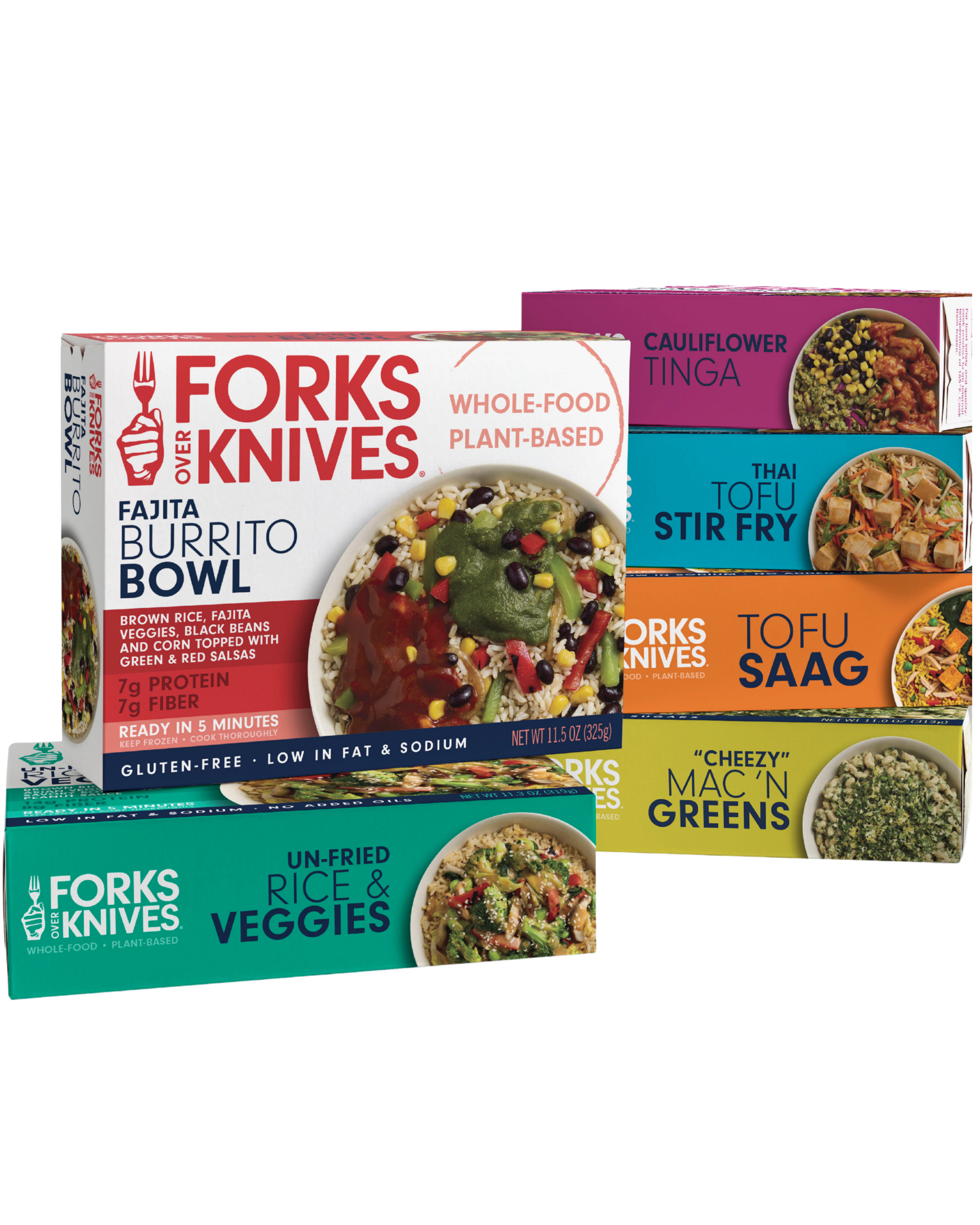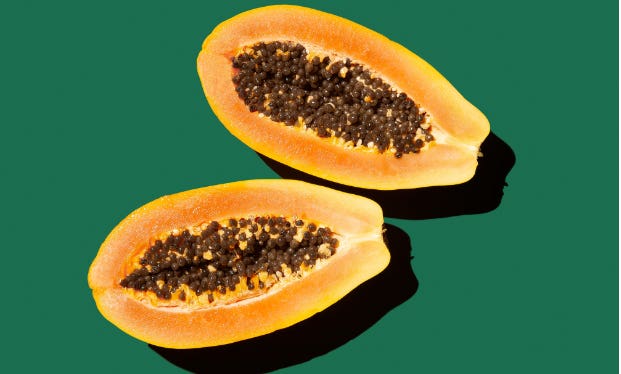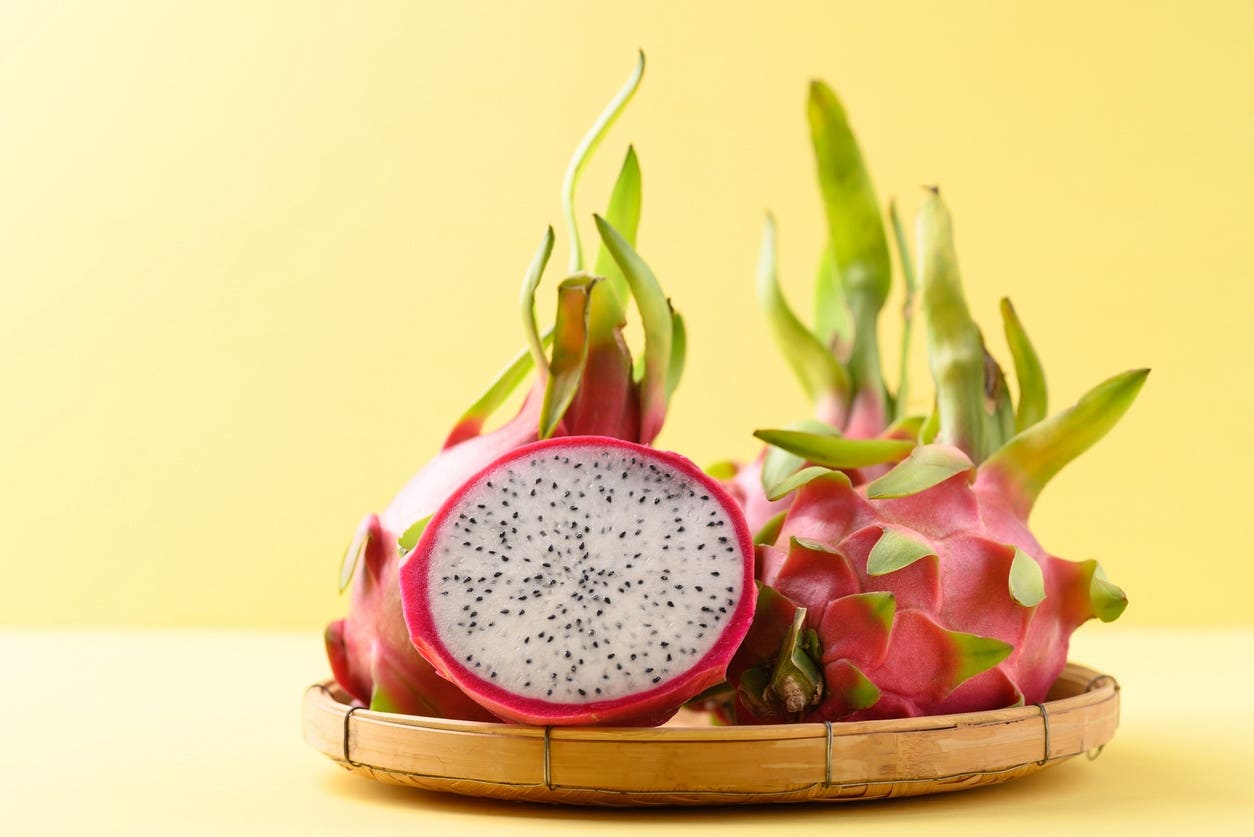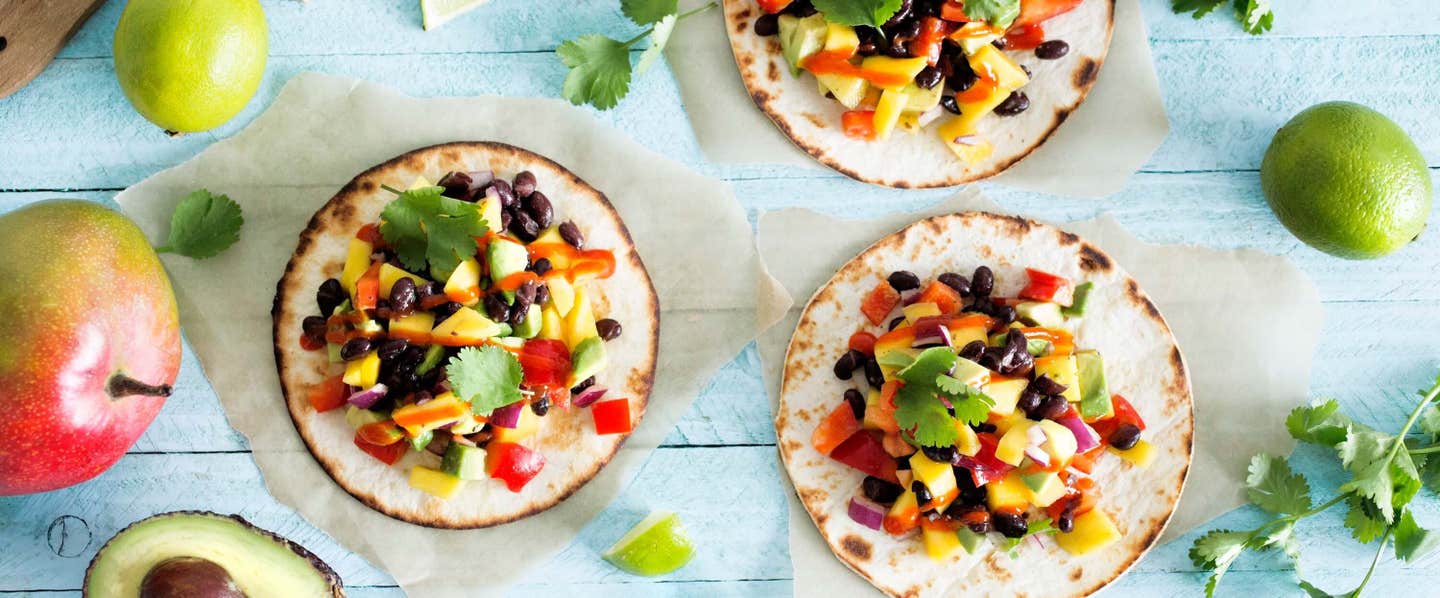Passion fruit goes by many names, including maracuyá in Spanish, maracujá in Portuguese, and lilikoi in Hawaiian. The award for best name, however, goes to the Chinese term bai xiang guo. It means “fruit of a hundred flavors,” which beautifully evokes the tropical fruit’s complex taste, which is hard to categorize but incredibly delicious.
Here’s everything you need to know to maximize that deliciousness, including how to make passion fruit puree, how to buy and store fresh passion fruit, what to look for in prepared purees, and easy ways to use the pulp and puree in your favorite recipes.
What Is Passion Fruit?
Native to South America, passion fruit is the small, oval fruit of a prolific flowering vine. The “passion” in its name refers to the flower, not the fruit, after Spanish and Portuguese missionaries to South America envisioned the beautiful blue and white blooms as a symbol of the passion of Christ. Those delicate flowers develop into thick-skinned oval fruits about the size of a lemon. As they ripen, passion fruits turn lemon yellow or reddish purple, and the orange, seed-speckled pulp inside becomes jammy and juicy.
What Does It Taste Like?
Passion fruit is fragrant, juicy, and sweet, with a tart, tropical punch. (Fun fact: Passion fruit, or lilikoi, was one of the original flavors used in Hawaiian Punch.)
When Is Passion Fruit in Season?
Passion fruit is a continuous crop, meaning the vines develop flowers and fruit throughout the year. There is a peak in production in summer and winter, when the fruits may be more plentiful and less pricey.
Selection and Storage
Look for passion fruit with bright yellow or red skin that is smooth or just slightly pockmarked. A little wrinkling is fine—some people believe the moisture loss that causes wrinkling improves and concentrates the fruit’s flavor. But too many wrinkles can mean dried-out pulp that may even have begun to ferment. Weigh each fruit in your hands: The heavier it feels, the juicier the pulp will be.
Store whole passion fruit at room temperature for a week, or in an airtight bag in the fridge for up to one month. You can also freeze the pulp in ice cube trays the way you would any fruit puree.
How to Cut Passion Fruit
Half the pleasure of enjoying fresh passion fruit is slicing it open to reveal the glistening pulp and seeds inside. The inedible rind is tender enough to cut with a paring knife, and you can even twist the two halves apart with your hands, in a pinch. Then, all you have to do is scoop out the seeds and pulp with a spoon and transfer to a bowl—or your mouth, if you’re snacking!
Passion fruit’s extreme juiciness, seedy crunch, and concentrated flavor make up for the small quantity of pulp it contains—only about ¼ cup for a single fruit. You can stretch that amount by stirring a teaspoon or two of water into the pulp. Thinning it this way also makes it easier to strain out the seeds for recipes that call for seedless pulp or puree.
How to Make Passion Fruit Puree
Here’s how home cooks make seedless passion fruit puree in Brazil, where it is one of the most popular ingredients in drinks and desserts.
Makes 1 cup seedless puree
Ingredients
8 small red passion fruits or 3 larger yellow passion fruits
Instructions
1. Halve the passion fruits. If the pulp seems dry, add about ¼ tsp. water to each half to help loosen it. Using a spoon, scoop the pulp and seeds into a blender or mini food processor.
2. Pulse the pulp several times to help separate out the seeds.
3. Place a sieve over a bowl. Push blended pulp through the sieve to strain out seeds. Discard seeds.
4. Store the puree in an airtight container in the refrigerator for up to five days or freezer for up to six months.
Buying Prepared Passion Fruit Puree
Frozen and shelf-stable passion fruit purees are widely available in Latin groceries and supermarkets, as well as online. Don’t be put off by the fact that they’re prepared; most brands have all the potent flavor of fresh pulp, without the pesky seeds to deal with.
When buying prepared passion fruit puree, check the ingredients list to be sure it doesn’t include sugar or sweeteners. Citric acid is fine; it’s a natural compound that’s added to keep the puree from losing its color. Store leftover puree in the fridge for up to a week or in the freezer for three to six months.
13 Ways to Try Passion Fruit Pulp or Puree
Passion fruit is one of those ingredients that wakes up all the other flavors around it. Here are a few easy ways to add it to dishes you probably already make at home.
- Drizzle over fresh fruit.
- Spoon into hot oatmeal.
- Add to a smoothie or smoothie bowl.
- Blend with frozen bananas for nice cream.
- Spread on sandwiches.
- Dollop in tacos.
- Use in place of vinegar in a salad dressing.
- Substitute for citrus in marinades.
- Stir into salsa (¼ cup to 1½ cups salsa).
- Garnish creamy desserts, such as Orange Panna Cotta.
- Use in place of sweetened stir-fry sauces such as oyster and hoisin sauce.
- Freeze puree in ice pop molds (with or without other purees).
- Fold a little (¼ cup to ½ cup) into pie and crumble fillings as a natural sweetener.
Related News
Get Our Best Price On The Forks Meal Planner

Forks Meal Planner takes the guess work out of making nutritious meals the whole family will enjoy.
Master Plant-Based Cooking!

Our new course features over 100 lessons, 50+ recipes, downloadable guides, and more!
New Frozen Meals!

Introducing our new frozen meals: Doctor-recommended, chef-crafted, & ready in minutes.




